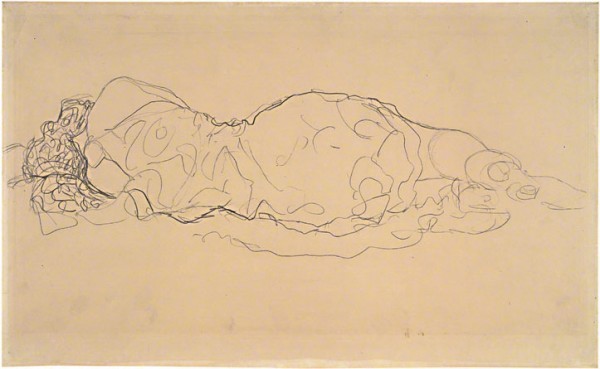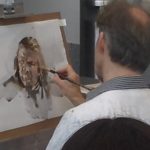Last Good Friday I took you shopping in Brooklyn where we found pretty little things and meandered on a walk of self discovery through the street (art). This spring is a little slow coming in New York, with a lingering chill in the air. In lieu of last months flower show, I elected to take it inside and see some exhibits that have been rumoring around my world in whispers, yet I haven’t had time to go see.

A little Parisian decadence at the MET’s Costume Institute: “Impressionism, Fashion and Modernity” aught to entice the springs vivacious and eminent return, right? On show through May 27th the exhibition explores how the impressionists embraced fashion to define it’s modern time. Featuring the works of Monet, Cassatt, Morisot, Beraud, and Tissot, among others, paired with well preserved day dresses, ball gowns and accessories, the exhibit raised for me the age old question; is fashion illustration art? Here is one perspective I reached through the story told in the exhibition:
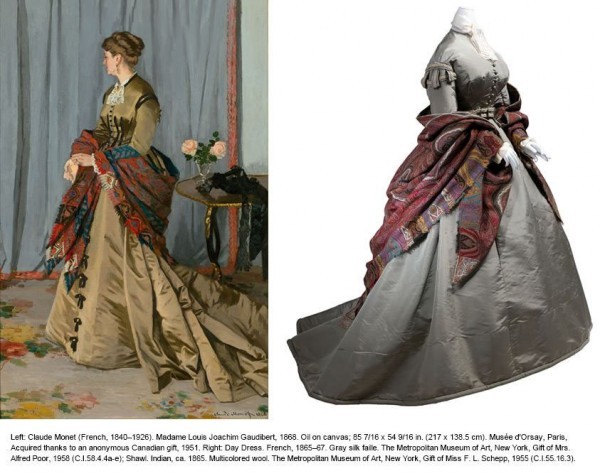
“The latest fashion … is absolutely necessary for a painting. It’s what matters most. “ Édouard Manet, 1881
“Following Corbet’s lead, Monet and his contemporaries embraced motifs that were formerly the domain of the journalistic, and painted them on the scale of history paintings. The glory of the past gave way to the immediacy of the present.” Said the opening statement on the wall of the exhibition.
It was a movement that strove to capture the immediacy of a moment in passing, to express a fleeting reaction to the sights, smells and changing seasons. When artist’s portraiture became more about a character in costume than a significant member of society, a brush stroke expressed a time and place instead of describing it. It was a perfect catalyst for fashion and fine art to collide.
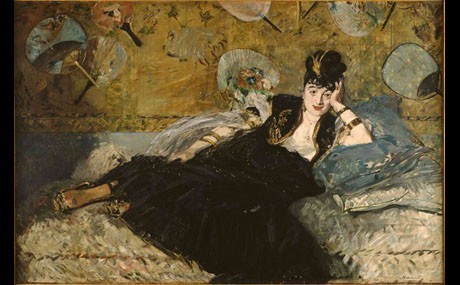
The gallery most clearly representing this theme was the “Plein Air” gallery with all the familiar paintings of outdoor scenes depicting lavishly dresses men and women bathed in sunlight, painted with the immediacy of gesture.
“The colorful dresses that trained in the grassy nooks claimed painters rapt attention. They sought to capture the look of the moment.”
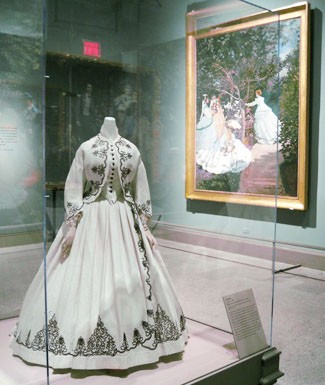
But the gallery that most paired the reason for art and fashion to merge was the “Dictates of Style” room.
“What poet, in sitting down to paint the pleasure caused by the sight of a beautiful woman, would venture to separate her from her costume” -Charles Baudelaire 1867
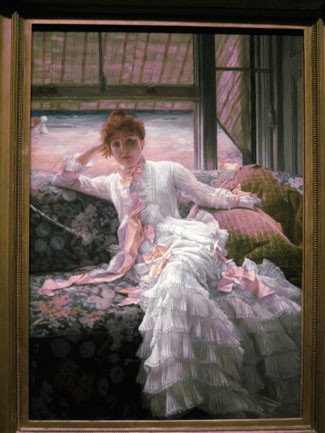
James Tissot July Specimen of a Portrait
To me, this explains the “why”. Human spirit, character, how, with the change of clothing, we can become anyone we want. We are immortalized as an ideal on canvas; humanity exalted by ornamentation. Nothing more than we did to the walls of cathedrals in previous ages.
“Offering a snapshot of a person in a familiar context, in clothing that defined the individual character. Figures that gave models an infinite number of lives proliferated.”
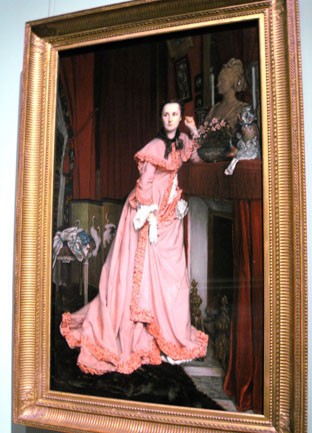
James Tissot Portrait of the Marquise de Miramon
You might think I’m reading too much into it, I am a fashion designer and illustrator after all, perhaps I take it far too seriously…
“What is important is to avoid being literary and so to choose something everyone knows- still better to have no story at all.”
Fashion may seem as frivolous and frothy as impressionism itself. But beauty for beauty’s sake and capturing that fleeting reaction to a passing thing of wonder is as convoluted an art as any story worth telling.
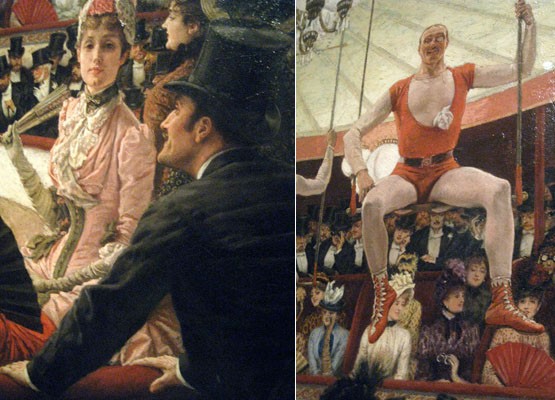
James Tissot The Circus Lover
“Think of a treatise on ornamentation for women or by women, based on her manner of observing, of comparing and selecting their fashionable outfits and all things. On a daily basis they compare, more than men, a thousand visual things with one another.”- Degas (from his notebooks)

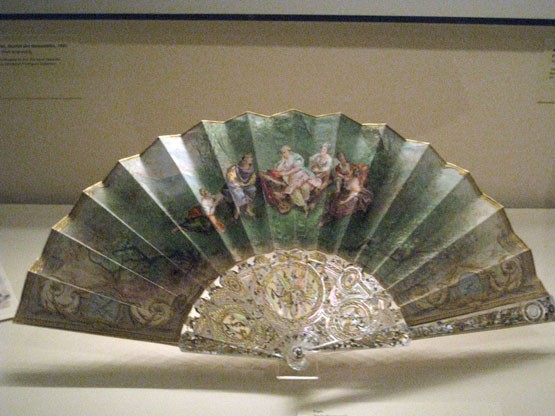

Does art not require the same skill, of observing, comparing and editing the essential to create a thing of beauty?
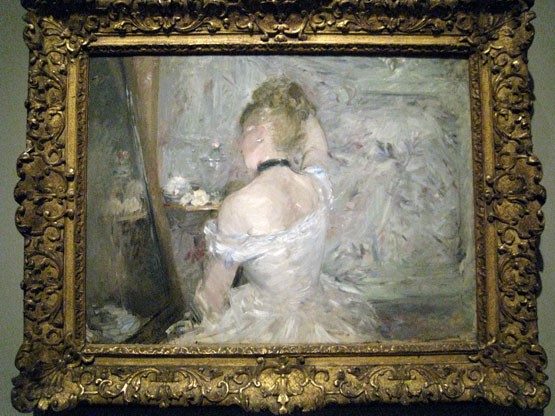
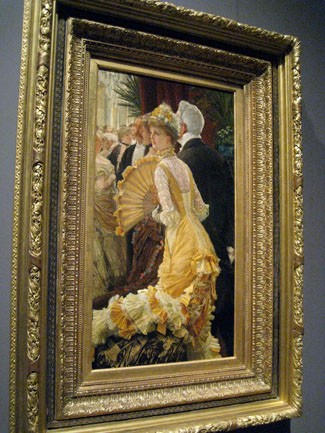
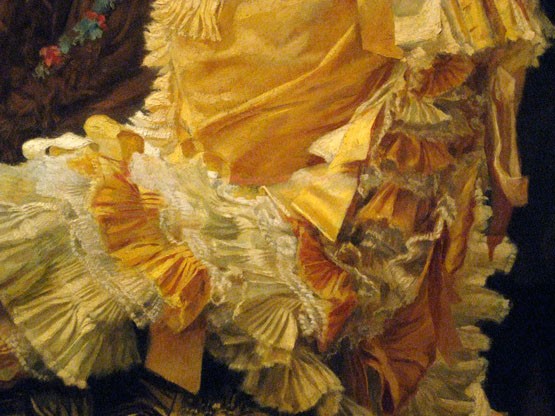
James Tissot Evening The Ball Detail
With that, I left the MET to temper the sugar sweet frivolity of the bourgeois Parisians with the German Expressionist exhibit at the Neue Gallery across the street. (To quote the band Red Hot Chili Peppers “I like pleasure spiked with pain and music is my aeroplane…”) First, though I stopped for a bite at the historic Cafe’ Sabarsky for some Viennese, Easter savory and a stout.
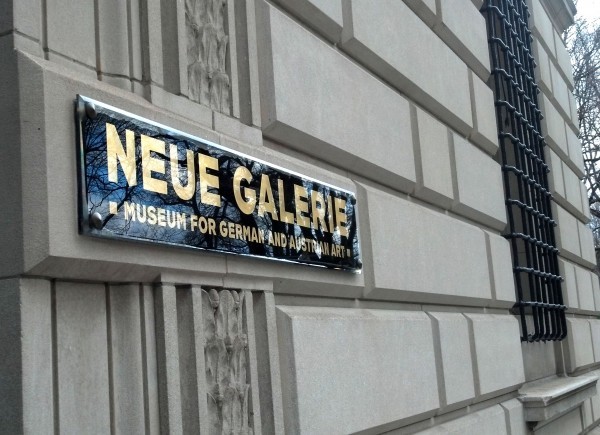
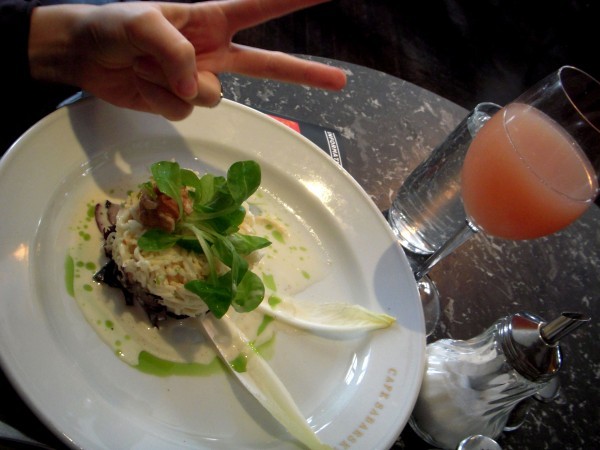

Now, you may think the two movements are polar opposites, but I would disagree. As Sabarsky observed, “At the beginning of the 20th century, a cultural mood of restlessness and a sense of awakening demanded more spontaneity and directness in art.”
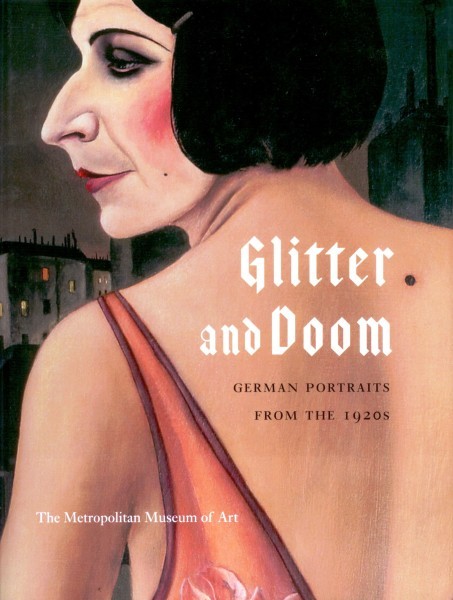
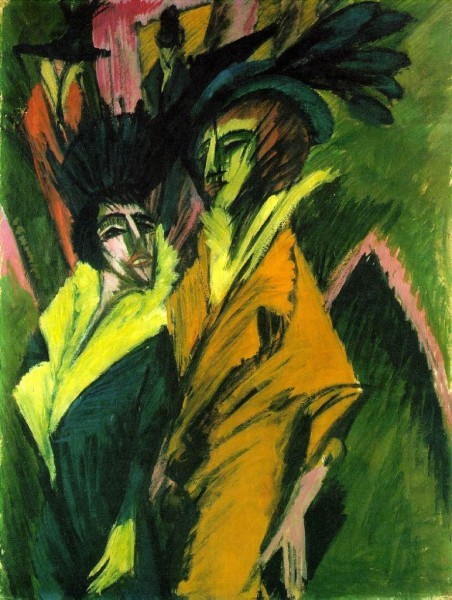
Artists strove to communicate the time, place and character with a swift and immediate reaction to a moment in passing. The mood however, happened to be social unrest as opposed to decedent self indulgence. The anxious, agitated and often erotic nudes of Egon Schille and Gustav Klimt equally seek to capture the character and mood of the subject, not so much focusing on a “likeness”.
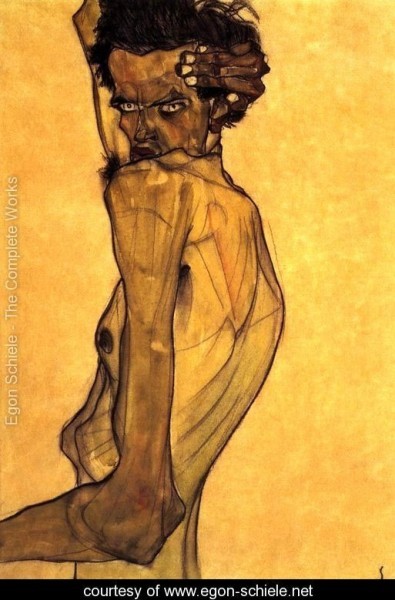
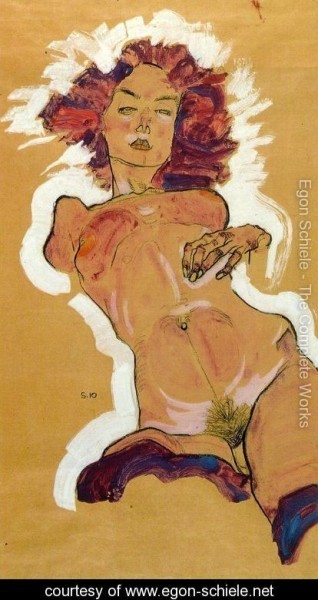 The distortions of anatomy and expressions on faces, broken lines of city scape are all telling a story of the interior of the artist and how they relate to the subject.
The distortions of anatomy and expressions on faces, broken lines of city scape are all telling a story of the interior of the artist and how they relate to the subject.

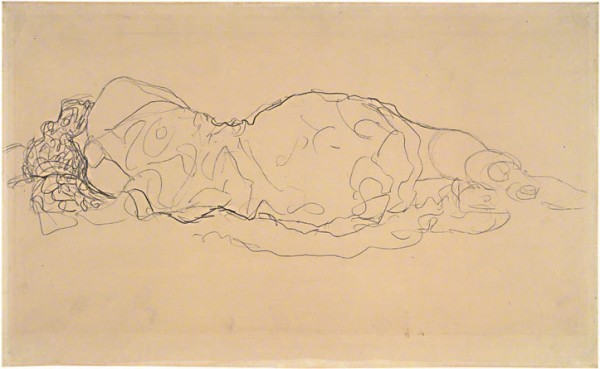
I personally found especially entertaining the drawings/paintings of Otto Dix and George Grosz. Usually portraits, they seem to simultaneously capture the duality of their sitter as a Dr. Jekyl and Mr. Hyde dichotomy. The sensitivity and agitation of application, a slight deformity or use of color all make the viewer uncertain if the artist liked the person or not.
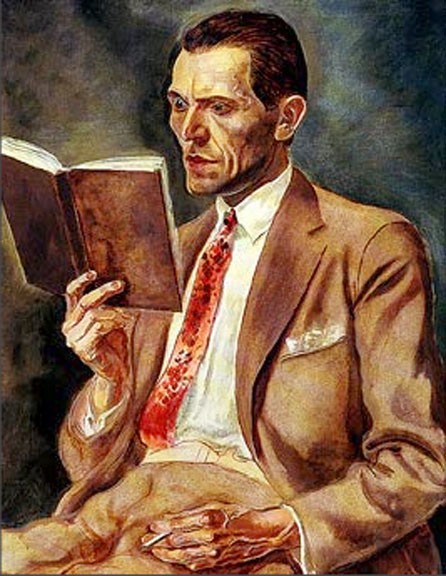
George Geosz Portrait of John Forste
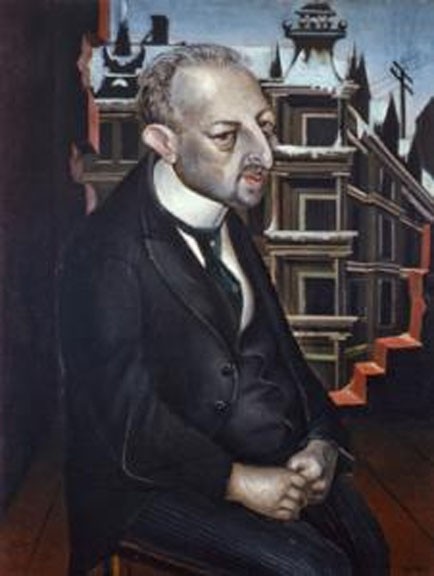

My brain tickles with the notion every time I see these portraits, like a baffling puzzle the goes together many ways I think the artist is winking at me. Perhaps it was both. This fractured theme continues to define a lifestyle of the modern times with the Bauhaus . Restlessness abstracted in lines and forms in the design of furniture and architecture. The aesthetic visually balances weight, with tension, the Bauhaus redefined “lifestyle” as functional and efficient.
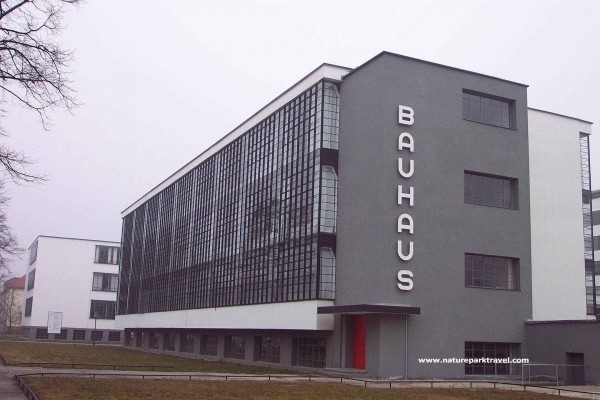
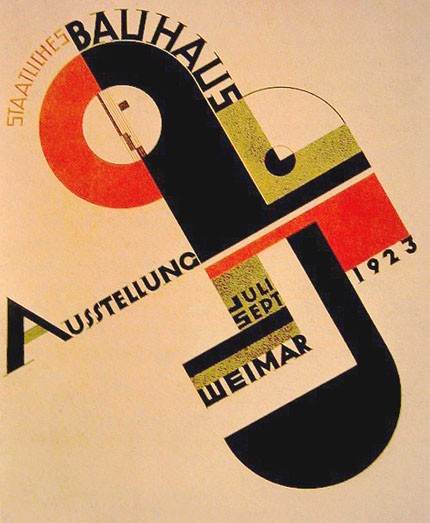
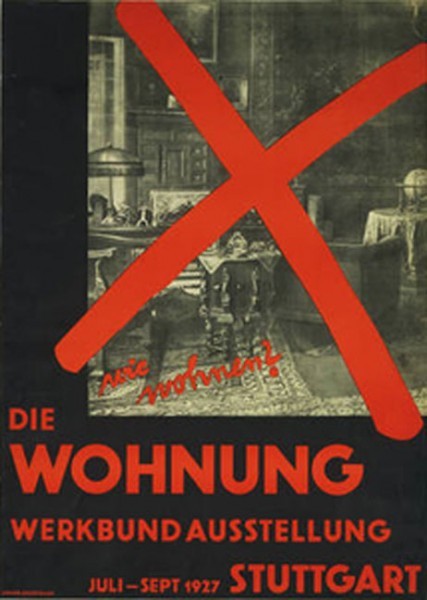
This is not lifestyle
Impressionism and expressionism, why shouldn’t fashion get involved? Art, fashion and the creative lifestyle. That’s how I spent my Good Friday. It’s the balance of opposites that make a good composition. May you find joy in the flower as well as the thorns of your spring bloom.

